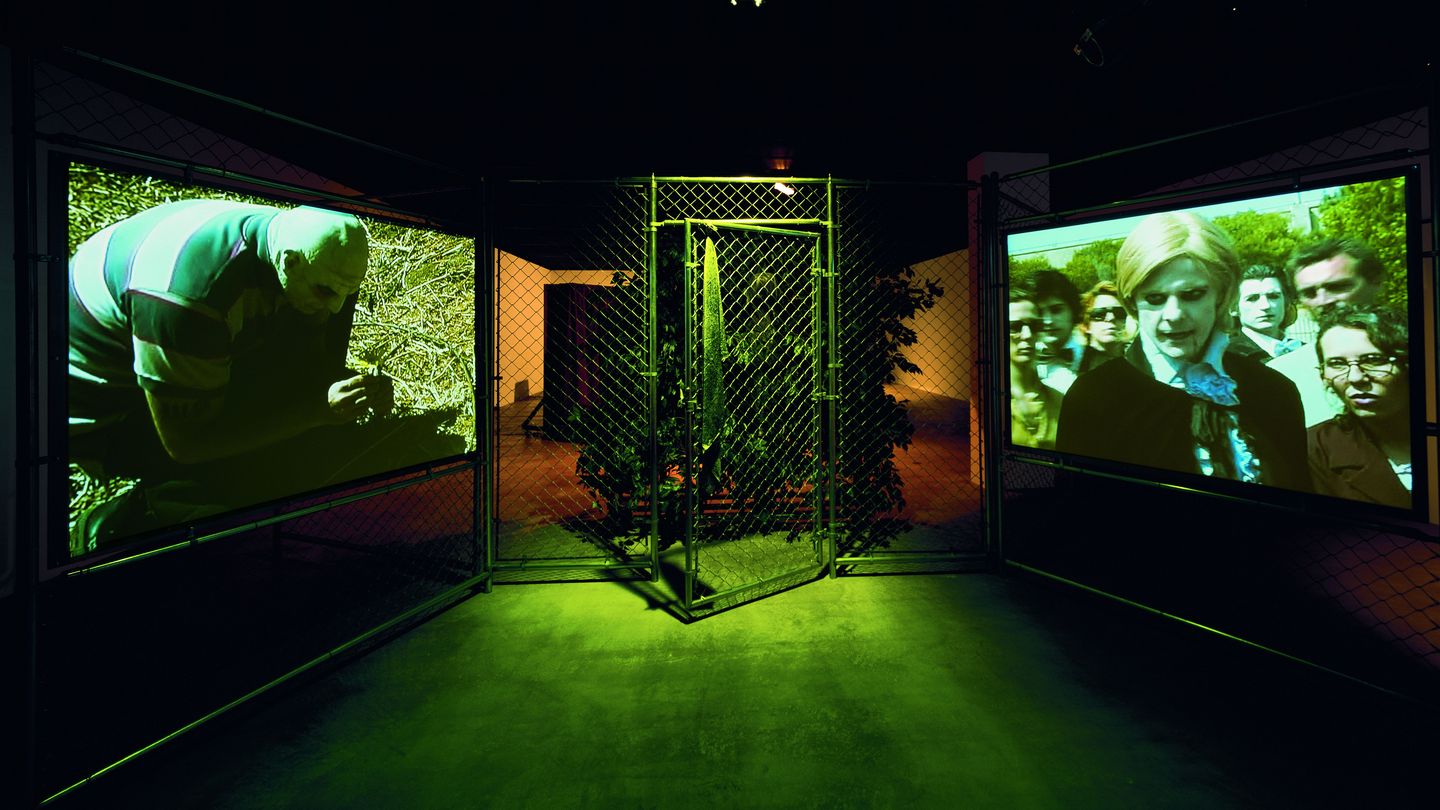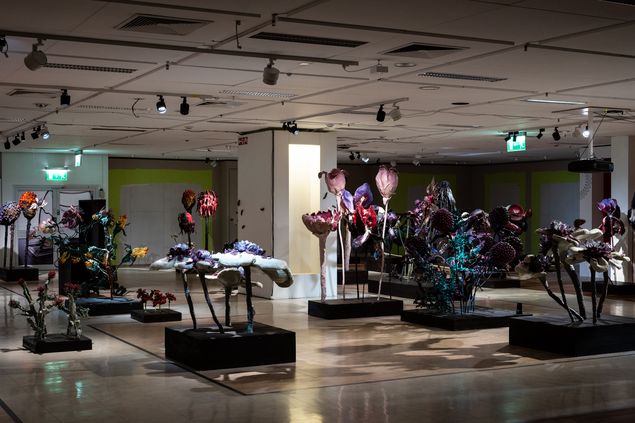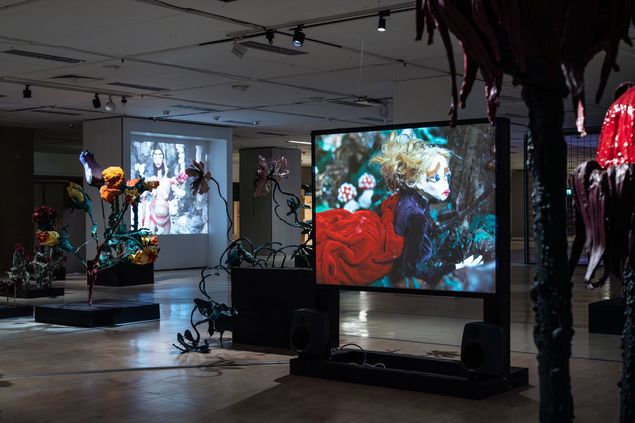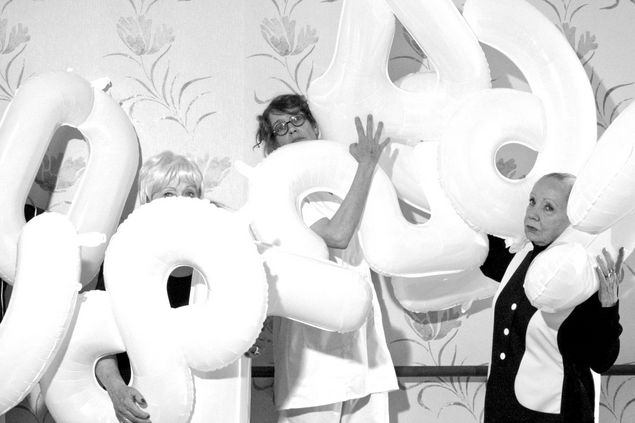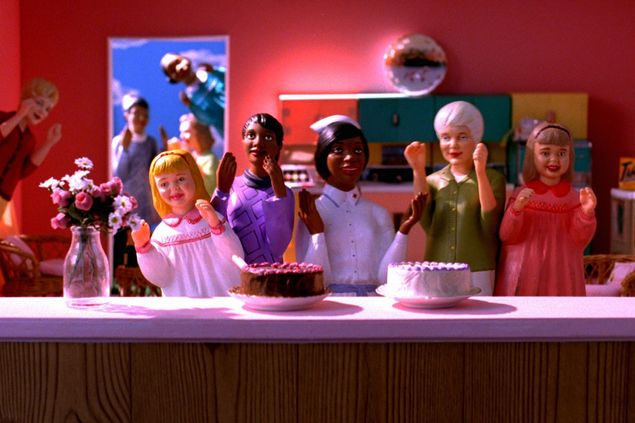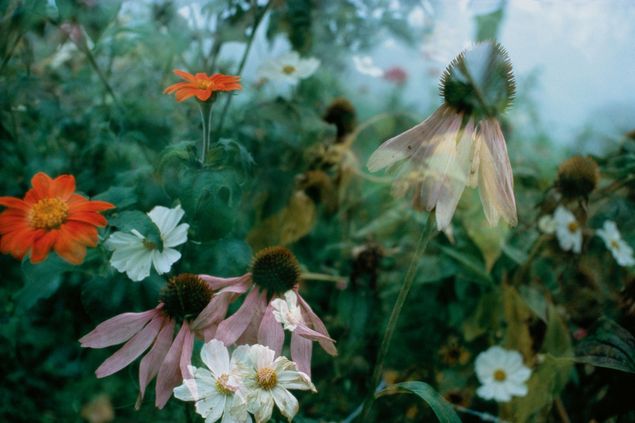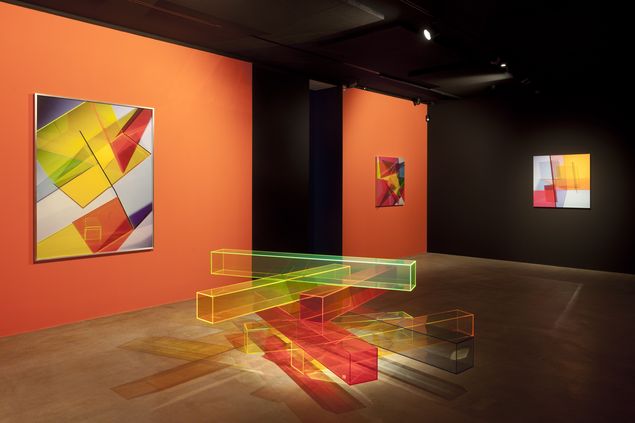Mike Kelley‘s works are based on his own personal experience of US American society and its education system. He takes an intuitively conceptual approach and exploits all available media. Kelley‘s thinking and his actions were shaped by a generation of artists that included such figures as Vito Acconci, Joseph Beuys, Chris Burden, Bruce Nauman, Dennis Oppenheim and Paul McCarthy. His intense exploration of language and his interest in music were influenced by Dadaists such as Kurt Schwitters and Raoul Hausmann.
It was bands such as MC5 or the Stooges, and the counter-culture movement of the 1960s, that awakened Kelley‘s interest in visual art. The sources of his work range from hippie psychedelia to American punk, from comics and folklore to Christian iconography and historical references. After turning his back on performance art, he reached a broader audience in 1987 with his Half a Man series, featuring tattered soft toys and stuffed animals.
His installations, which appear playful at first glance, draw the viewer into the artist’s own psychological world of repressed memories, painful experiences and sexual conditioning. Kelley was deeply interested in psychological processes, their scientific analysis, behavioural patterns and issues of sexual identity.
The installations Citrus and White (1991) and Unisex Love Nest (1999) in this exhibition made that intrest abundantly clear. Citrus and White featured a tangle of fluffy soft toys suspended from the ceiling that was regularly sprayed with a scent evoking a culturally specific form of cleanliness, hygiene and freshness. That particular scent, in Germany, just happens to be the scent of pine needles. The second installation was a precise reconstruction of a typical American nursery straight from the pages of a lifestyle magazine. The title Unisex Love Nest and the accompanying video Cross Gender/Cross Genre referenced the determination of traditional gender roles in such „ideal“ nurseries. A similar reference to conventional gender roles was reflected in the installation Alma Pater (Wolverine Den) (1990) mocking the banners, signs and symbols of Kelley‘s own alma mater, ther University of Michigan in Ann Arbor, with its focus, shared with other such universities, on honouring male-dominated sports teams. The exhibition concluded, both spatially and chronologically, with the sculpture and projection of Kandor 7 (2007) – in reference to Kandor, the capital city of the planet Krypton in the Superman comic series. The city that Superman comes from is threatened with destruction. Over the years, Kelley created various portrayals of this comic-strip city as an element of his sculptures.
